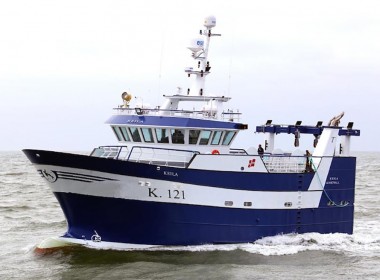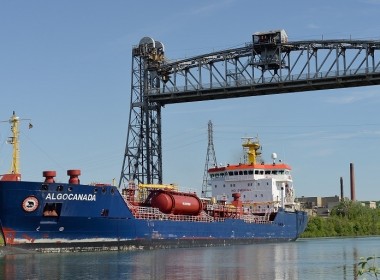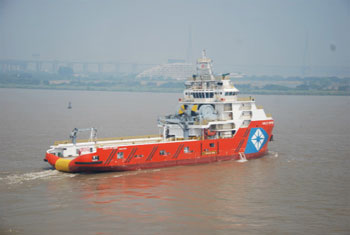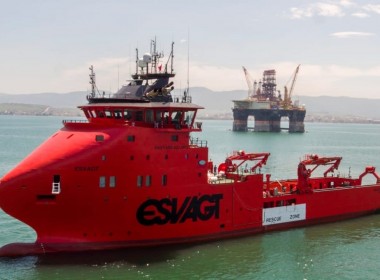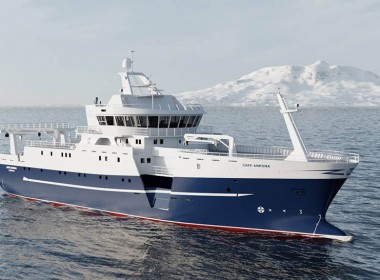VESSEL REVIEW | Purpose-built Kiwi scampi trawler
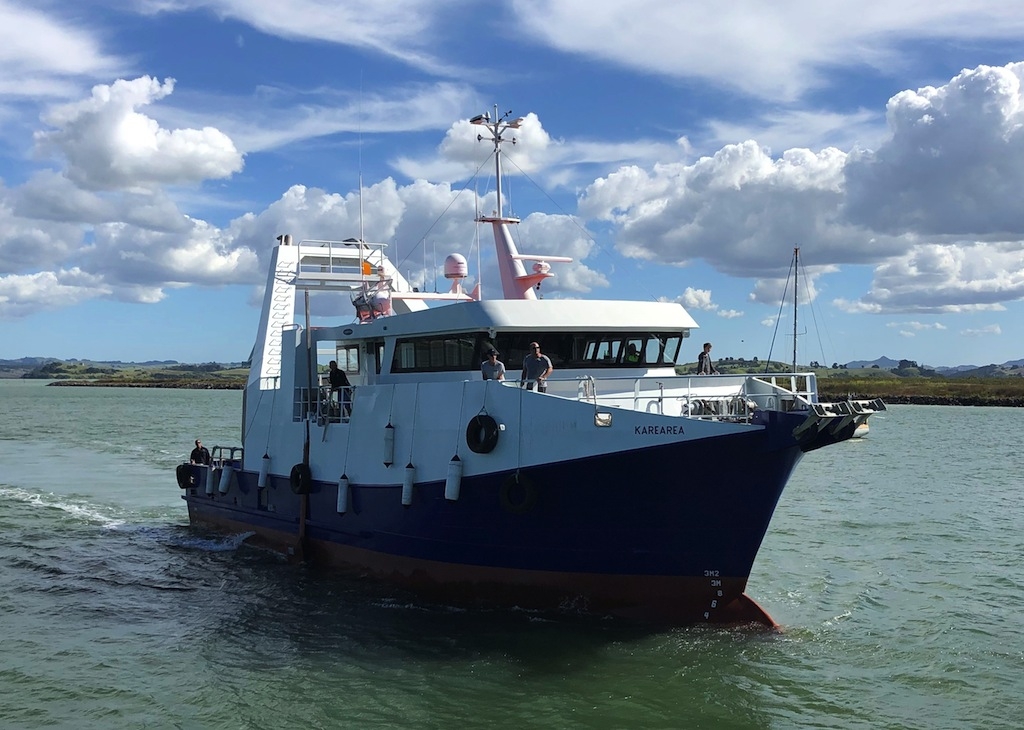
Whangarei (New Zealand)-based Penwarden Holdings has recently deployed the country’s only purpose-designed scampi trawler, following the delivery of the 24.65-metre Karearea from Australia earlier this year.
Designed by Oceantech, which has bases on both sides of the Tasman Sea, and built by Adelaide-based MG Engineering, the steel-hulled and steel/aluminium-superstructured trawler is operating successfully in the cold-water scampi fields off New Zealand’s Deep South.
The arrangement of the Karearea (Maori for New Zealand falcon) was based on the 19.8-metre and 7.2-metre-beam fishing trawler Bilyara, also designed by Oceantech and built in 1988, but with a brief to further expand on that proven vessel’s capacity and operations.
“Lengthening the vessel to 24 metres was adapted early in the design, to take full advantage of our modern vessel efficiencies,” said the design firm.
“The additional length further improved the vessel fuel and freezer hold capacities and also supplied sufficient deck space for specialised deck equipment.”
Particular attention was given to accommodating the 110,140-litre fuel capacity, thereby providing greater endurance of 10,000 nautical miles and “resulting in a very full hull” with 55-tonne freezer hold capacity.
Featuring a distinct bulbous bow hull form, instead of the plumb bow more recently preferred by the designer, the Whangarei-registered vessel was fitted with articulated stabilisers to aid in seakeeping, as well as other modern systems to optimise operations.
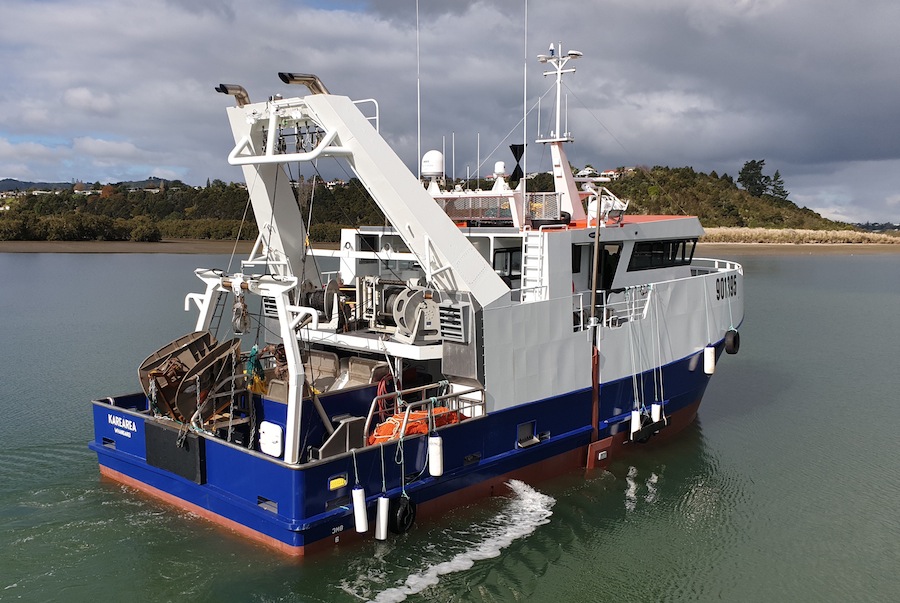
A multi-purpose A-frame, retractable stabiliser fins, RSW catch hopper and articulating stern frame were all included in the design.
The vessel’s focsle deck is equipped with an impressive array of winches, with a 14.5-tonne continuous rated trawl winch. The winch power is matched with a two-metre CP prop and ducted Kort nozzle, providing considerable traction for trawling modern gear.
At eight metres in beam and with 3.5 metres draught, the New Zealand-flagged trawler’s Caterpillar C32 main engine delivers 750 kW at 1,600-1,800 revolutions per minute, providing for a cruising speed of 9.5 knots and maximum speed of 10.5 knots.

Equipped with a Hundested CPGD50 gearbox, Hundested VP10 propulsion and Caterpillar C7.1 generator, the vessel is controlled by Hypac steering and has a dry exhaust system.
The mechanical fit out of the 16-tonne bollard pull trawler was provided by Marine and Industrial Rebuilds and Craig Tilsner, winches by Neumann Equipment, windows by Windows West, paints/coatings by International Paints and hydraulics by Bosch Rexroth.
Crewed by eight people and with a freshwater capacity of 25,770 litres, the trawler features Holden Calais seating, safety flooring from Adelaide-based Next Gen Flooring, interior and exterior lighting from M2i and safety equipment from Survitec New Zealand.
General Marine Services New Zealand supplied both the GIA BMI sea water pump and Sailor C s3/40 water maker systems, and CASCO provided the refrigerated and air conditioning systems.
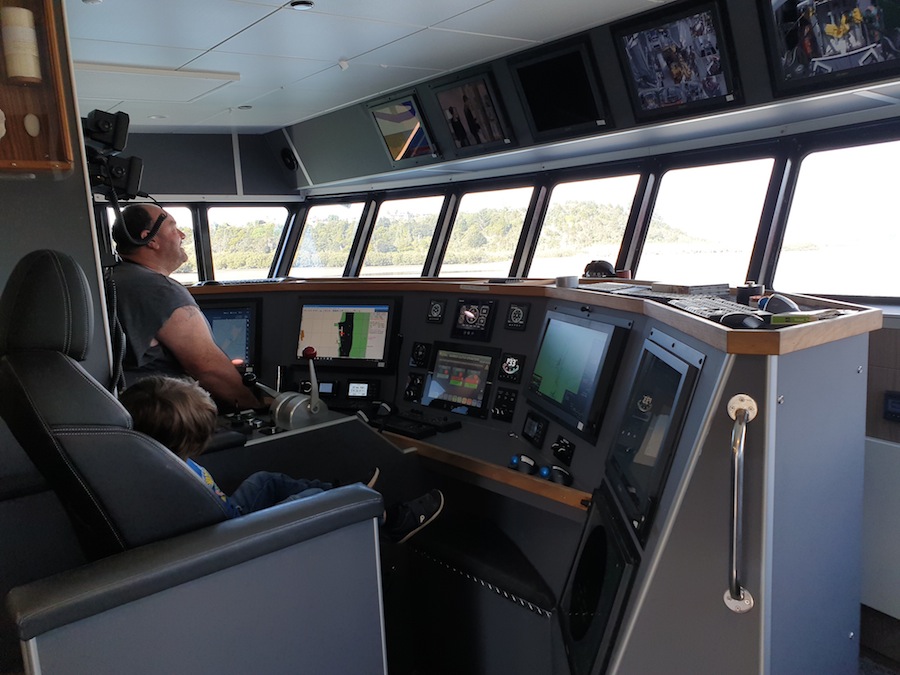
Electronics were handled by Dunedin-based Navcom Electronics and include Furuno FAR 1513B 12kW radar, Furuno FCV 1900 depth sounder, two SSB-Icom radios, WASP F3i sonar as well as fixed Sailor Fleet One and handheld Iridium Extreme satellite communications.
Penwarden Holdings was established in the late 1970s by husband and wife team, Neil and Lyn Penwarden, initially to operate in the Queensland prawn fishery. The firm’s first vessel was the 58-foot, wooden-hulled Chromatt.
The family relocated to New Zealand in the 1990s and entered the scampi industry. The business remains in family ownership with two of the Penwarden’s children actively involved.

{tabulizer:include style[rs_oy1yy6y0.css] id[tab_rMiuWyHSgW]}
| Karearea | |
| SPECIFICATIONS | |
| Type of vessel: | Scampi trawler |
| In survey to: | Maritime New Zealand |
| Home port: | Whangarei, New Zealand |
| Owner: | Penwarden Holdings, New Zealand |
| Operator: | Penwarden Holdings, New Zealand |
| Designer: | Oceantech, Australia |
| CAD software: | Autoship; Autocad; Rhino |
| Builder: | MG Engineering, Australia |
| Mechanical fitout: | Marine and Industrial Rebuilds; Craig Tilsner |
| Hull construction material: | Steel |
| Superstructure construction material: | Steel; Aluminium |
| Deck construction material: | Steel |
| Length overall: | 25 metres |
| Length waterline: | 22.3 metres |
| Length: | 23.95 metres |
| Beam: | 8 metres |
| Draught: | 3.5 metres |
| Depth: | 3.92 metres |
| Displacement: | 343 tonnes |
| Main engine: | Caterpillar C32, 750 kW @ 1600 rpm |
| Gearbox: | Hundested CPGD50 |
| Propulsion: | Hundested VP10 |
| Generator: | Caterpillar C7.1 |
| Steering: | Hypac |
| Exhaust system: | Dry |
| Maximum speed: | 10.5 knots |
| Cruising speed: | 9.5 knots |
| Range: | 10,000 nm |
| Bollard pull: | 16 tonnes |
| Hydraulic equipment: | Bosch Rexroth |
| Electronics supplied by: | Navcom Electronics |
| Radar: | Furuno FAR 1513B 12kW |
| Depth sounder: | Furuno FCV 1900 |
| Radios: | 2 x SSB – Icom |
| Sonar: | WASP F3i |
| Satcom: |
Sailor Fleet One, fixed; Iridum Extreme, handheld |
| Weatherfax: | Furuno |
| Autopilot: | Furuno Nav Polot 700 |
| Compass: | Furuno Satcompass |
| GPS: | Furuno |
| Plotters: | Sea Plot, Max Sea Time Zero |
| AIS: | Furuno Class B |
| Other electronics: | Marport, Maritron Engine Monitoring, 60cm Sat TV dome” |
| Winches: | Neumann Equipment |
| Refrigerated system: | CASCO |
| Air Conditioning: | CASCO |
| Sea water Pumps: | GIA BMI |
| Watermaker: | Sailor C S3/40 |
| Fish hold capacity: | 55 tonnes |
| Specialty Equipment: | Marine and industrial Rebuilds |
| Paints/coatings: | International Paints |
| Windows: | Windows West |
| Seating: | MG Engineering (Holder Calais) |
| Lighting: | M2i |
| Panelling: | MG Engineering |
| Furniture and Fittings: | MG Engineering |
| Safety flooring: | Next Gen flooring |
| Safety equipment: | Survitec NZ |
| Liferaft: | Survitec NZ |
| Fuel capacity: | 110,140 litres |
| Freshwater capacity: | 25,770 litres |
| Crew: | 8 |


